LDAP without eDirectory
The LDAP option installs SecureLogin into LDAP v3.0 directory environments.
You can specify more than one LDAP server for the SecureLogin installation. Although the dialog boxes in the installation program only allow you to specify one LDAP server, you can specify additional servers by modifying the automate.ini file.
-
Run setup.exe, found in the securelogin\client directory.
-
Select a language, click Next, and accept the license agreement.
-
Select Complete, then click Next.
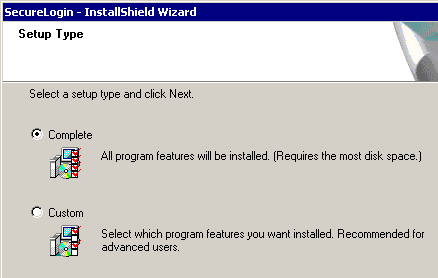
The Complete option uses default values and installs SecureLogin in c:\program files\novell\securelogin. For options available through the Custom option, see Using the Custom Option for LDAP on eDirectory.
-
Select LDAP v30 as the platform where SecureLogin stores its data, then click Next.
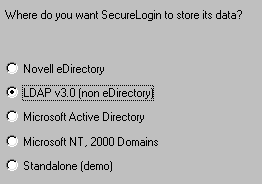
-
Select when to log in to LDAP, then click Next.
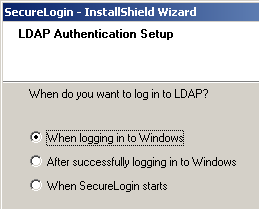
The After Successfully Logging in to Windows option is called Application mode.
IMPORTANT: LDAP in Application mode is not intended for workstations with multiple people using the same local Windows account (for example, in kiosks). Doing this can cause users to log in as the previous user when SecureLogin is terminated incorrectly.
If the workstation is running Novell Client software, the Application mode option is not available. This option enables you to log in when GINA starts.
-
At the Ready to Install SecureLogin dialog box, click Install.
-
Click Finish, click Yes, then restart the computer by clicking OK.
-
After the computer restarts, log in to LDAP before SecureLogin starts, then provide necessary information.
The first time that you log in to LDAP, you need to provide the server's IP address and the port number.
New users must also provide a passphrase question and answer.
Using the Custom Option for LDAP without eDirectory
The Custom option provides the same defaults as does the Complete option, but enables you to do the following:
- Specify a folder where SecureLogin will be installed.
The default is c:\Program Files\novell\securelogin.
- Specify whether to associate your Windows username with your LDAP distinguished name.
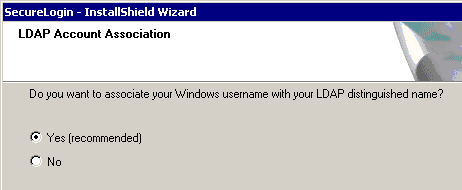
- Specify an LDAP server address and port.
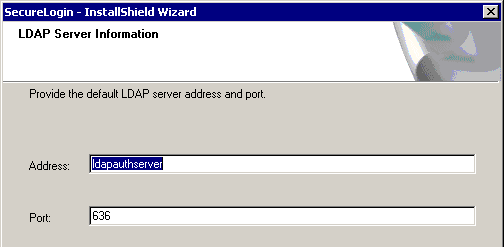
The name (ldapauthserver) that appears in the Address text box is a placeholder name. Type a server name or IP address. If you type a name that cannot be found (for example, the name does not exist or the server is unavailable), the login will slow down significantly.
IMPORTANT: If you type a name that cannot be found (for example, the named server does not exist or is unavailable), the login will slow down significantly as LDAP tries to locate the named server. If the server name is in the DNS, LDAP quickly locates the server.
- Specify a path for SecureLogin's local cache.
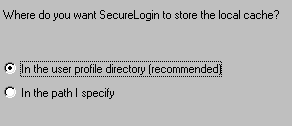
The user profile directory is the default path.
User profiles are in the following locations:
- Select SecureLogin components.
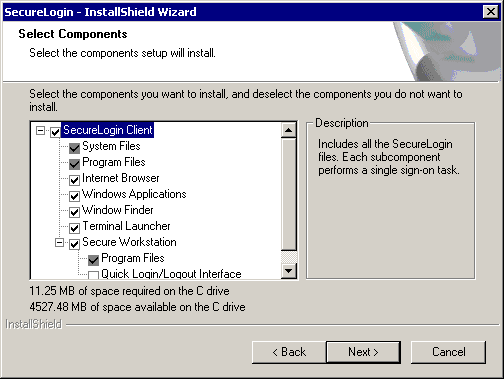
The Description panel provides information about a component that you select.
- Select options for starting SecureLogin.
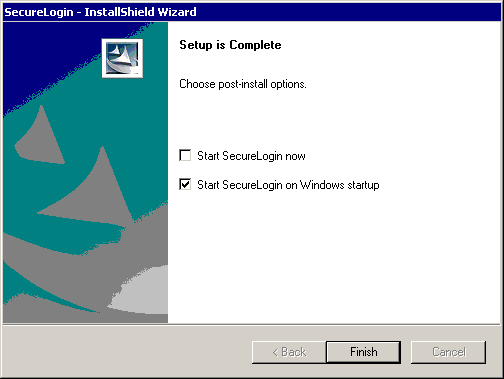
If the Start SecureLogin Now check box is checked, you do not need to restart your workstation. If the box is not checked, you need to reboot.
If the Start SecureLogin Now check box is not checked but you check it, you will be prompted to restart your workstation, even if you do not want to.
If you check the Start SecureLogin On Windows Startup check box, SecureLogin starts immediately after you log in to Windows.